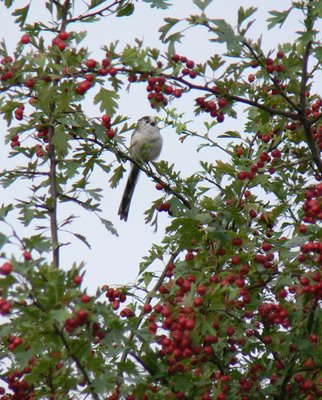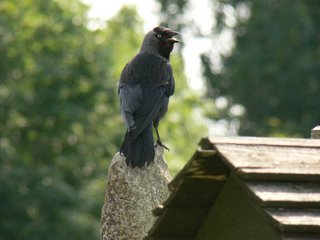In Treeton, Kay's home village, the pit closed down years ago and the old coal tip has reverted to nature. There's a walk on the edge of the village leading through hawthorn scrub to a small marsh and then a river, now running clean again. Even though it was only a few hundred yards long an early morning walk produced jays, bullfinch - better heard than seen - a snipe, kingfisher and a mixed flock of 30+ tits. The light and views precluded most decent photos, but I did like the way this low light shot of the long tailed tits turned out
There was plenty to see beside the birds, including this near perfect comma butterfly, the sadly rampant himalayan balsam covered in bees (mining the admittedly gorgeous flowers!) and fungi.
Himalayan Balsam
A trip to the RSPB wetlands reserve at Old Moor, near Barnsley, the pools formed by coal mining subsidence proved less successful for seeing the waders, but then it helps if you remember your telescope! Still provided half decent views of snipe, golden plover, etc, and some action when lapwing flocks numbering hundreds were spooked by a peregrine. These wigeon were about the only wetland birds in camera range, although you can probably see the snipe with the eye of faith!
Wigeon
My main reason for going however was to see the tree sparrows - apparently the biggest UK colony now, with 63 pairs having up to 3 broods each this year. Didn't make them any more prepared to pose for the camera though, this being the best effort.
Even the usually reliable feeding station failed to turn up a single sparrow, but it was better than expected for other birds - I'd never seen bullfinch on a feeder before, and the grey partridge were also a bonus.

Well worth a further visit, especially as I didn't get to see the lesser spotted woodpeckers. I'm assured this was a willow tit, but it wasn't singing so I've taken that on trust - one day I'll have the confidence to separate willow from marsh tits on sight!

































